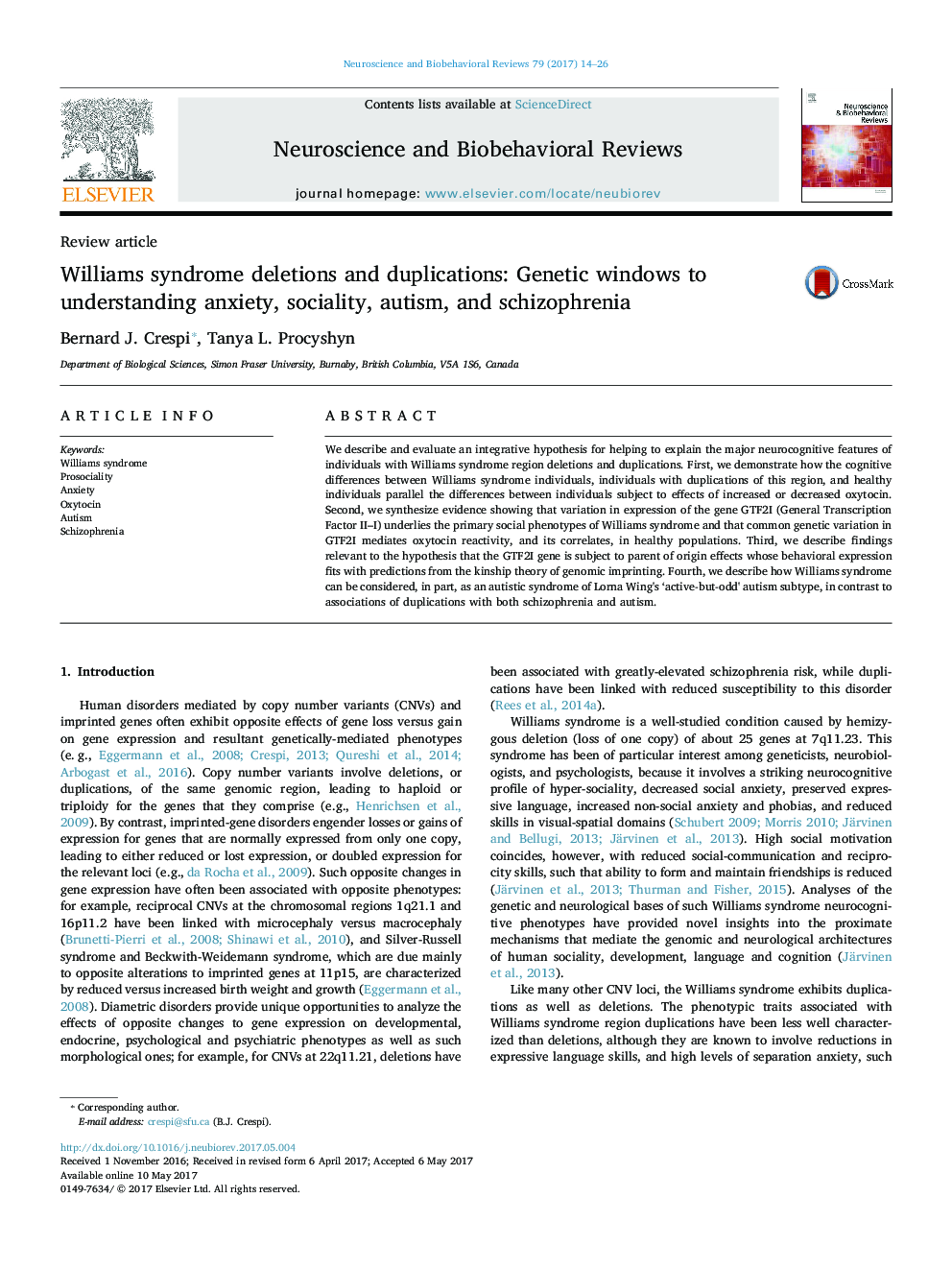| Article ID | Journal | Published Year | Pages | File Type |
|---|---|---|---|---|
| 5043684 | Neuroscience & Biobehavioral Reviews | 2017 | 13 Pages |
â¢We review the biological bases for low social anxiety in Williams syndrome.â¢Oxytocin and the GTF2I gene mediate copy number phenotypes for this region.â¢GTF2I polymorphisms and gene deletion influence oxytocin reactivity.â¢GTF2I, and oxytocin production, are subject to parent of origin effects.â¢Williams syndrome may reflect, in part, the active but odd' subtype of autism.
We describe and evaluate an integrative hypothesis for helping to explain the major neurocognitive features of individuals with Williams syndrome region deletions and duplications. First, we demonstrate how the cognitive differences between Williams syndrome individuals, individuals with duplications of this region, and healthy individuals parallel the differences between individuals subject to effects of increased or decreased oxytocin. Second, we synthesize evidence showing that variation in expression of the gene GTF2I (General Transcription Factor II-I) underlies the primary social phenotypes of Williams syndrome and that common genetic variation in GTF2I mediates oxytocin reactivity, and its correlates, in healthy populations. Third, we describe findings relevant to the hypothesis that the GTF2I gene is subject to parent of origin effects whose behavioral expression fits with predictions from the kinship theory of genomic imprinting. Fourth, we describe how Williams syndrome can be considered, in part, as an autistic syndrome of Lorna Wing's 'active-but-odd' autism subtype, in contrast to associations of duplications with both schizophrenia and autism.
Graphical abstractDownload high-res image (157KB)Download full-size image
